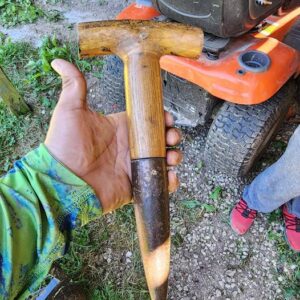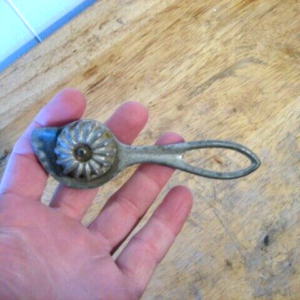If you’ve ever strolled past an old house and noticed a low, unassuming cast-iron contraption near the entrance, you might have encountered a relic from a bygone era – the boot scraper. Often overlooked, this simple yet practical device has a fascinating history dating back to the 18th and 19th centuries.
Known as a “decrottoir” in French, the term itself hints at the less glamorous aspect of its original purpose – the removal of excrement from shoes. In an era where walking paths were becoming more prevalent, the streets were not exactly pristine. Muddy roads and unpaved pathways meant that people’s boots would inevitably pick up undesirable remnants during their travels.
The invention of the boot scraper coincided with the rise of walking paths, providing a convenient solution to the messy problem at hand. These ground-level cast-iron contraptions were strategically placed outside homes and establishments, offering individuals a means to rid their footwear of mud and other unwanted substances before entering a building.
In the 18th and 19th centuries, when the boot scraper flourished, it served an essential role in maintaining cleanliness both inside homes and on the streets. As people walked through muddy terrains, the boot scraper became a first line of defense against the intrusion of dirt into living spaces. It was a practical and functional addition to the exterior of houses, reflecting the practicality that characterized that era.

However, with the advent of modernism came changes to the urban landscape. Paved roads and sidewalks became the norm, reducing the prevalence of mud on the streets. As a result, the boot scraper gradually declined in both necessity and popularity. With cleaner pathways, the need for a dedicated tool to clean one’s boots before entering a building became less pressing.
Despite its diminished practicality in the modern world, the boot scraper has not disappeared entirely. Many old houses, especially those with a commitment to preserving historical elements, still proudly display these unassuming devices. While they may no longer be as functional as they once were, boot scrapers now serve as charming reminders of a time when cleanliness required a bit more effort.
Moreover, the boot scraper has found a second life as a decorative element. Its simple yet sturdy design has aesthetic appeal, adding a touch of vintage character to the entrance of old houses. Some homeowners even take pride in restoring and maintaining these features, recognizing their historical significance and unique contribution to the architectural heritage of the past.
So, the boot scraper may be a humble and somewhat overlooked old house feature, but its history is rich and tied to a time when muddy streets posed a daily challenge. While its practical use has diminished, the boot scraper endures as a tangible link to our historical urban landscapes, reminding us of a time when cleanliness required a bit more effort and innovation. Whether functional or decorative, these unassuming devices continue to hold a special place in the architectural history of old houses.



